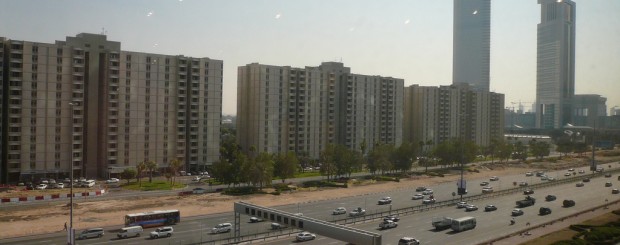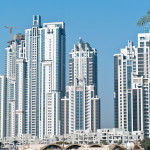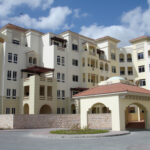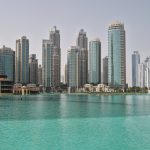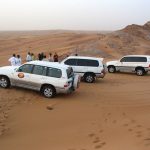Driving In Dubai – 7 Common Mistakes To Avoid
I suspect the majority of short-visit tourists don’t bother to rent cars or do a lot of driving while they are in Dubai. It’s a lot cheaper and more convenient to either take the Metro or use Dubai’s abundant and cheap taxi services.
But people who are here for longer periods, and of course new expatriate residents, often rent, lease, or buy cars to give themselves the freedom to access parts of Dubai city, Dubai Emirate, or the six other emirates which comprise the United Arab Emirates.
Here, we’ll look at a few of the pitfalls of driving in and around Dubai, which, if avoided, can make your driving experience more enjoyable and less nerve-wracking.
Great roads, but there are times to NOT be on them.
Dubai – and the whole of the UAE – has great road network. The combination of macadam/asphalt/tarmac laid on a well-prepared sand base provides a surface that is a real pleasure to drive on.
But there are also a lot of cars using those roads, particularly certain arterial highways that connect Dubai with the northern emirates of Sharjah, Umm Al Qawain, and Ras Al Khaimah – and also the federal capital Abu Dhabi in the south.
At certain times, these key arterial links, the E311 and E611 (linking Dubai to the north) and Sheikh Zayed Road (connecting Dubai to Abu Dhabi) become gridlocked with traffic, moving at snail pace, despite having up to 8 lanes in either direction.
So, if you can possibly avoid it, don’t head for Dubai on the E311 or E611 between 6:30am and 9:00am Saturday to Thursday, nor attempt to travel Sharjah and Ajman between 5:00pm and 8:00pm on the same days.
The same times apply to Sheikh Zayed Road, with traffic flow towards Abu Dhabi in the morning being only a little better than flow towards Dubai.
Life in the fast lane… can make you lose more than just your mind.
For the record, the speed limit (if traffic conditions permit) on the main highways of the UAE is 120kph, but you will surely see many vehicles, including some of the bigger, burlier SUVs, travelling at much greater speeds than this.
The fast lane, the one furthest to the left on the multi-lane highways, is their personal race-track. Don’t be tempted to think that because you are travelling at the legal limit of 120kph in the left lane that that is the end of it.
If you’re lucky, you’ll get the headlights flashed at you, day or night, as a warning – but you could become an unwilling participant in some pretty scary overtaking maneuvers, either to your left on the hard-shoulder, or to your right across the slower lanes, then back in front of you.
I call it video game driving.
If you’re not lucky, you won’t get the warning: there will just be the wind-slam of a big black Landcruiser or Escalade racing past you on the hard shoulder at a speed considerably faster than your 120. It can be very alarming and some horrendous multi-vehicle “accidents” have resulted from these practices.
If you see some horrific lane changing being performed at speed by cars behind, don’t flinch. Don’t try to get out of their way. Staying put is the only thing you can do to preserve life and limb.
Use the fast lane sparingly – only to make quick, well-signaled passing maneuvers, then get back into the second or third lanes. Your life expectancy will be greatly enhanced.
Don’t take your eyes off the road; use your side mirrors.
It’s common sense for driving in multi-lane conditions, but it’s amazing how many minor road mishaps are a result of not keeping in touch with what is ahead. Cars drive too close, almost bumper-to-bumper in the UAE; it’s quite unnerving until you get used to it.
The worst lapses probably happen when the traffic is actually moving relatively slowly, like the rush hour crawls. Drivers get distracted by other stuff happening around them, or take/make calls on their mobiles, and in a flash, you have a rear-ending.
Probably not fatal or even injury-causing, but very irritating, especially in the heat, when you have to wait by the roadside for a Police Accident Report.
Don’t rubberneck.
Yes, it’s easier said than done. It’s very common behavior on Dubai highways. The traffic flow slows down inexplicably, people get impatient, and frequently, the reason is everyone wants to have a good look at the accident (major, minor, or multi-car) that has occurred and maybe blocked one lane.
If all eyes are to the left or right, the chances of one of those irritating rear-endings described above increases dramatically. So, you have to get used to driving with an eye on front, rear, and both sides of your vehicle. It is defensive driving that will keep you accident free.
Watch it when it’s wet.
Watch out for the others who don’t adjust their driving for the weather conditions at all. Surprising as it may seem, it does rain in the UAE. December and January are two months most likely to see heavy downpours.
This is what happens: the roads become very greasy and slippery. Maybe it’s the rain releasing oily substances from the tarmac, or maybe it’s the rain loosening a year’s worth of film and pollution from the road surfaces…
Apply your brakes and you’re in for quite a shock, even if your car is brand new and has the very latest in ABS assistance and anti-skid technology. Trouble is, even if you’re driving sensibly and carefully, many others won’t be – and you may be involved in the consequences of their stupidity.
Never lose your temper or give in to road-rage.
If you’ve had a near miss, or had to hit the brakes hard as a result of some other driver’s stupidity, selfishness, or action clearly in violation of the Road Code, it’s natural to express your exasperation in some way or another.
A gesture, an outburst of strong language – even though well and truly merited – can have very unfortunate consequences if the offending driver is an Emirati national. If your gesture is seen, if your vocal outburst is seen (it certainly won’t be heard), you may well find yourself facing a charge of insulting behavior while driving – and you will be required to prove your innocence.
No matter how sorely provoked, bite your tongue and sit on your hands – metaphorically, of course.
Don’t ever drink and drive.
This should be obvious anywhere in the world, but while many countries have a low permissible blood-alcohol rate, typically 50 or 80 milligrams of alcohol per 100 milliltres of blood, in Dubai and the rest of the UAE, it is zero.
Zero milligrams of alcohol and zero tolerance shown if you are found to be driving after drinking. The consequences can be very severe: jail, stiff fines, and deportation. Bang goes your lovely Dubai life-style, all for a single, over-priced pint of Heineken or a tasteless Chilean Sauvignon Blanc.
Leave the car; take a taxi.

